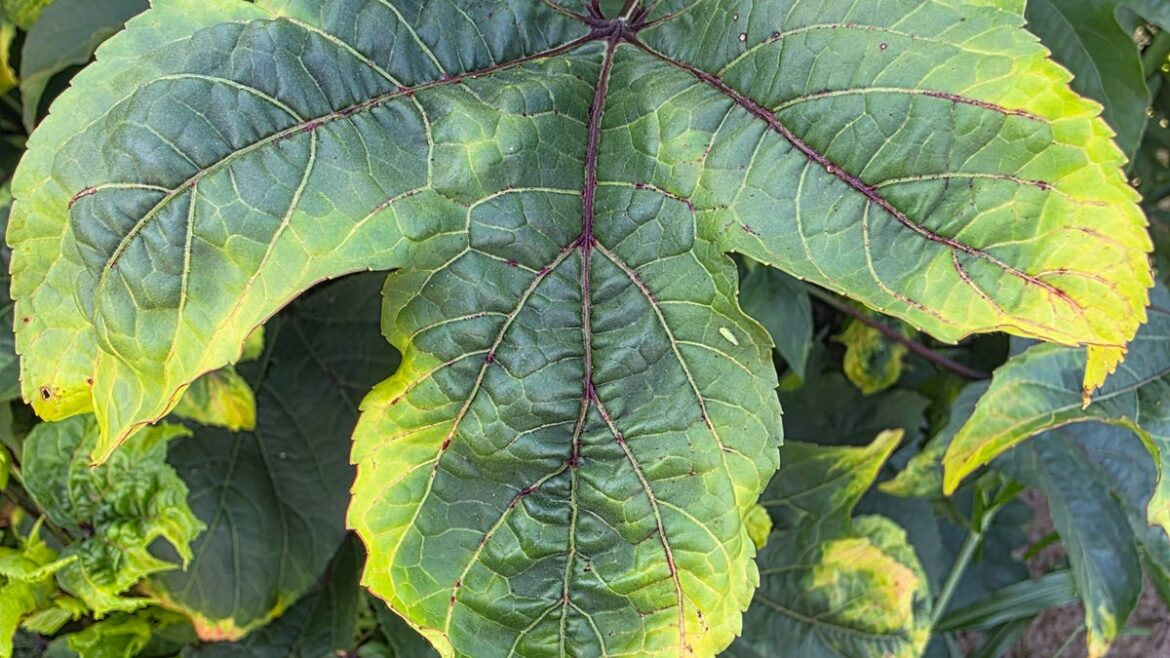Muhammad Haseeb
| Guest columnist
If your hibiscus garden is suddenly looking sad – leaves curling, edges bronzing, or even dropping early – you’re not alone. A tiny new insect invader has recently made its way to Florida, and it’s already raising red flags for both gardeners and farmers across the Southeast.
The culprit? A sap-sucking leafhopper known as the two spotted cotton jassid (Amrasca biguttula). Though it’s only about the size of a grain of rice, this little pest can cause big damage.
Spotted in Florida and spreading fast
Originally from Asia, the two spotted cotton jassid was first confirmed in the Western Hemisphere in 2023. By the end of 2024, it had reached Florida, and in 2025, sightings were confirmed in Georgia, Alabama, and South Carolina. This means the pest is actively spreading across the Southeast – and it’s not picky about what it eats.
What it attacks
The cotton jassid feeds on a wide range of plants – not just cotton. It’s been found on okra, eggplant, hibiscus, cowpeas, sunflowers, and even potatoes. It also targets many wild and ornamental plants in the hibiscus and nightshade families, making it a threat in farm fields, home gardens, and natural areas alike.
How to spot the damage
Both the adult insects and their nymphs (juvenile stage) feed on plant sap and inject toxin that disrupts the leaves’ normal function. It could be the jassid if you see:
Premature leaf dropYellow or bronze leaf edges that look scorchedDownward curling or cupping of the leavesStunted growth or fewer flowers/fruits
These symptoms often mimic drought stress or nutrient problems in plants, so take a closer look. Adults are small, pale green, and flick sideways when disturbed. Look for two tiny black spots near the tips of their wings. Nymphs are pale green, wingless, and super active on the undersides of leaves.
Why it matters
In parts of Asia, this pest causes major crop losses. Farmers spend heavily on pesticides to control it – which can reduce profits and wipe out helpful insects like pollinators and predators. If we aren’t careful, the same thing could happen here.
What you can doIn your garden: Check hibiscus, okra, and eggplant regularly for curling or scorched leaves and tiny green insects. If you find them, clip affected areas and bag them before disposing. Don’t move infested plants between locations.On farms: Remove weedy hosts from the field margins. Avoid over-fertilizing, which can make plants more attractive. Scout crops weekly during warm weather using sticky cards or sweep nets. If you suspect you’ve found cotton jassid, contact your county Extension office for confirmation.In your community: Keep an eye on ornamental plants in common areas or yards. If unchecked, neighborhood hibiscus bushes could become a local hotspot for the pest.Control options
Integrated Pest Management (IPM) is the best approach:
Cultural: Remove weeds and volunteer plants, water evenly, and avoid excessive nitrogen.Biological: Conserve beneficial insects – ladybugs, spiders, minute pirate bugs (which were recently seen feeding on jassids here in Leon County), and lacewings.Organic/Biorational: Neem oil, insecticidal soaps, and fungal biopesticides like Beauveria and Lecanicillium may help.Chemical: Insecticides should only be used when necessary, and should be rotated to prevent resistance.
This pest is new to our area, and early detection is key. By keeping an eye on your garden and knowing what to look for, you can help prevent the two spotted cotton jassid from becoming a widespread problem.
Dr. Muhammad Haseeb is the Director and Associate Professor of the Center for Biological Control, College of Agriculture and Food Sciences, Florida A&M University and is a volunteer writer for UF/IFAS Extension Leon County, an Equal Opportunity Institution. For gardening questions, email the extension office at AskAMasterGardener@ifas.ufl.edu.


Comments are closed.